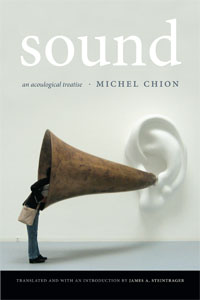 by Daniel Villegas Vélez
by Daniel Villegas Vélez
This essay has been peer-reviewed by the boundary 2 editorial collective.
We listen before awakening. How could a sound—Agamemnon’s voice in Racine’s Iphigénie, for example—wake us up, if we were not listening in our sleep? This reflection opens Michel Chion’s Sound, an Acoulogical Treatise, suggesting that sound comes before everything else, yet is hardly grasped in the instant. Elaborating on the relation between sound and awakening, Chion reads a short text by Victor Hugo that begins “I hear some voices. Glimmers through my eyelid” (3). The poet goes on to describe a multiplicity of sonorous fragments from the waking world, including “a bell,” “shouts of swimmers,” “A trowel/[scraping] a roof,” “Impacts. Murmurs,” “Military music that comes in gusts,” “Hubbub on the quay. French voices. Merci,” and finally “A fly [that] enters. Immense breath of the sea.” (4) Through this opening acoustic tableau, Chion introduces sounds as unsettling and unstable events; with determinate and indeterminate sources: animal, mechanical, spoken, musical, and noisy; sounds that evoke directions, distance, the passing of time, and the wandering attention of the waking ear. The interest of Hugo’s privileged piece—the opening nine pages of Sound are devoted to a close reading of its sixteen verses—lies in the French poet’s attention to language’s capacity to qualify sounds as vague, definite, punctual, or transient.[1] For Chion, sound is always in passing, often vaguely heard and only occasionally preserved, never without alteration. As he argues, it is in the nature of sound “to be often associated with something lost—with something that fails at the same time it is captured, and yet is always there” (3). In Sound, Chion follows the traces of this fleeting event across various media—literature, cinema, music—offering a renewed vocabulary to engage with sound’s distributed ontology and technological transformations.
The present book is not a history of sound, but it assumes that sound has a historical character, which is inseparable from both the types of questions we ask about its nature and its forms of production, mediation, and reception. As an object of study, the notion of sound is coetaneous with that of the modern subject: both arguably emerged together around Descartes’ Compendium Musicae (Descartes 1618). Written as a private gift for Isaac Beeckman and published later in 1650, the short text opens with the statement that “the object of this musical treatise is sound,” (huius objectum est sonus). Here, Descartes conceives of sound as resulting from vibrating strings of different lengths, perceived by a listener aware that her perception of sound differs from sound’s existence in itself (1618, 89). This opuscule, the first work on music to take the hearer as its starting point, ended a long tradition of speculative music theory focused on pure proportions—the microcosmic manifestations of a macrocosmic sonorous universe. In this tradition, sound as heard (and in this case only pure musical proportion or consonance) was the secondary manifestation of the immutable ratios that organized the cosmos. After this Copernican revolution, sound depends on the relation between subject and object in acts of perception in which the subject emerges as a self-grounded locus of cognition (Moreno 2004, 52). As a result, sound became either the object of acoustics as a branch of physics and later psychoacoustics, or was reduced to the musical entities—the triad, the tone—that came to dominate music theory in the West by the end of the nineteenth century; yet these entities, abstracted from their sounding context, are not necessarily audible—in some cases, they are necessarily not audible (Rehding 2000).
Like Descartes, Chion is concerned with the relation between sound as a physical occurrence and its human perception and cognition. Yet the object of Sound is of an entirely different kind: for Chion, sound is an event. Inextricable from its human audition, conditions of observation, and linguistic mediation, sound has an ambiguous status between a sign and an object. As he writes towards the end of the book, “that the question of sound as an object should remain problematic, contradictory even, means that sound is this contradiction” (210). Similarly, this contradiction is the object of his “acoulogical” treatise, which offers an account of how sound—a fleeting event—will have become the object of analysis and manipulation of contemporary musical practice, theory, and cinema.
Indeed, Chion has focused on exploring sound’s productive contradictions in diverse settings: as a composer of musique concrète, a musicologist, and a scholar of sound theory. Chion is best known in Anglo-American contexts by his work on film sound, most importantly through his books Audio-Vision and Film: A Sound Art, where he convincingly argues that cinema must be understood as an audiovisual medium; any approach that fails to rigorously account for the complex relations between sound and vision on the screen remains theoretically limited (2009, 2010). Chion has also published on the role of the voice in cinema (1999) in addition to numerous monographs on filmmakers including David Lynch (2006).[2]
Sound, as published by Duke University Press, is a translation of the 2010 revised edition of Le Son: Traité d’acuologie (Chion 1998). The excellent English translation by James A. Steintrager contains 12 chapters divided into five sections. The first two sections explore sound in its multifariousness and ambiguity. Chapter 1 concludes with a psychoanalytical account of the ontogeny of listening to argue that language and listening emerge coextensively through the imitation of external sounds (15). Chapter 2 offers a critique of mechanicist models of listening, distinguishing between sound as a physical event and sound as heard/felt. Chion offers the word verberation to refer to sound as it exists in the physical world, as a wave composed solely of frequencies and amplitudes. Towards the end of the book, he opposes verberation to auditum—sound as perceived—as the main object of his newly defined acoulogy (192). Chion further explores sound in relation to time (chapter 3); the voice and language (chapter 4); and the distinction between musical sound and noise (chapter 5). These chapters are less argumentative in tone and aim, often reading more like an “omnium-gatherum”—or a collection of miscellanea—than a treatise proper. In fact, Chion remarks on how books on sound and listening (R. Murray Schafer’s The Soundscape [1977] and his own included) tend towards the rhapsodic, since sound does not belong strictly in a single field and cannot be exhausted from one privileged perspective. Sound, Chion writes, “is torn, like the body of Orpheus, between disparate disciplines” (195). The main effect of this disciplinary dispersion, as Chion approaches it, is to decenter traditional notions of the ear, the voice, and music as the privileged sites of theorization of sound, thus opening the book—and thought about sound in general—to wide ranging considerations that include literature, psychoanalysis, and cinema studies.
Having traced sound across temporal, disciplinary, and sensorial boundaries, Chion devotes the three argumentative sections that follow (chapters 6-12) to recover theoretically what the first part disseminated. In chapter 9, Chion argues that the possibility of capturing, transmitting, amplifying, fixing, and modifying the traces of all kinds of sonorous events has transformed sound at an ontological level—or perhaps what changed is how we conceive of what sound is (132). Through these technological transformations, we can listen to a sound repeatedly, and this possibility makes sound into a permanent, analyzable object that exceeds its function as a sonorous index interpreted as the effect of a given cause (149). In this respect, Sound is an exposition (with important revisions), of the work of Pierre Schaeffer (2017). A radio technician-turned-composer and amateur phenomenologist, Schaeffer questions the naive attitude that identifies a sound with its “cause,” reducing auditory experience to visual prejudice. During the 1960s, Schaeffer reflected on the experience—which he dubbed acousmatic—of listening to music on the radio without visual access to performing instruments and bodies, seeking to develop a musical practice of “concrete music,” that took advantage of this “pure” listening situation. A canonical figure in the history of music for his work on “found sound” composition or musique concrète, Schaeffer was a musician who considered the gramophone, tape recorder, and the cutting board as his instruments, proposed that the infinite repeatability of sounds afforded by phonography yields an entity with an independent, objective reality: a “sound object” (2017, 15). The incessant repetition of a given sound—the paradigmatic broken record or “closed loop,” as Schaeffer called it—might transform our understanding of sound’s ontology. Schaeffer then developed a vocabulary and a philosophical approach, couched in Husserl’s phenomenology and Jakobson’s linguistics, to theorize sound as an object: a semi-stable, intentional entity different from its source or signal, dependent on, but irreducible to its “support” in a given recording medium, and disclosed by a mode of listening called “reduced listening.”
While Schaeffer makes his first appearance early in the treatise, Chion gives him most attention in Chapters 6-8. Chion has already produced a workable presentation of Schaeffer’s thought in his Guide to Sound Objects (Chion 1997).[3] The present book, subtitled An Acoulogical Treatise, is again a lucid, encompassing exploration of listening that helps broadening our understanding of the sound object beyond its status as an acousmatic event. In fact, one of Chion’s most important contributions in this book is to demonstrate that the notion of acousmaticity is actually superfluous for a post-Schaefferian conception of sound. If acousmatic sound à la Schaeffer is sound listened to without regard to its cause, so as to provide new sonorous materials for vanguardist musical practice, then Chion’s redefined acoulogy—a term he borrows from Schaeffer himself—re-inscribes the sound object onto an expanded field beyond strictly musical applications (210). To this end, Chion overhauls “reduced listening”—which attends to sound as such, without regard to causes or effects—with several other helpful notions. For example, Chion introduces the term figurative listening to supplement Schaeffer’s distinction between causal listening (which treats sound as indexical) and semantic listening (which treats sound as a medium for the transmission of a coded meaning).[4] While reduced listening attends to sound “in itself,” Chion remains interested in the ways the myriad other sounds enmeshed in daily life might also become an object of theoretical concern. Not every mode of listening that seeks to relate a sound to something beyond itself is naive, as Schaeffer’s account seems to imply. To be sure, there are “causalist” accounts that limit or “lock up sound…within a spatially delimited cause” (105), but there are other modes of listening in which causes or meanings need not—or must not—be banished to access what matters in a given sound. As it happens, it is almost impossible not to posit a cause for sounds or, in Chion’s paradigmatic example—the mother in Hitchcock’s Psycho—not to fold the voice back into the body (Chion 1999, 21). Disembodied voices (and by extension all acousmatic sound) carry an uncanny affect—often an obstacle for electroacoustic music, yet well exploited in cinema and literature—that propels us to posit the existence of a body as their source. In other words, there is no purely acousmatic sound.
Departing from Schaeffer, Chion sees causal listening as the unavoidable attempt to attribute a definite source to a given sound by extrapolating the source’s material characteristics from the sound’s perceived qualities (Chion calls these telling qualities “materializing sound indices” (103). However, one can distinguish between the real cause (the totality of interacting bodies, media, and spaces that produce a given sound) and the attributed cause (the element in this assemblage we deem most relevant when a describing a given sound), which might differ from the real cause but makes a sound meaningful in a specific context. In fact, a sound does not have a single real cause: sound is a distributed phenomenon involving bodies in contact, resonance spaces, transmitting media, physiological and psychoacoustic listening mechanisms, and so on. Chion suggests we use the phrase “the sound of a piano” to refer to the real cause, and “piano sound” to refer to the attributed cause—where, for example, a synthesizer produces the piano sound (115). In opposition to these two forms of causal listening, figurative listening is not concerned with a sound’s real or attributed causes. Instead, it describes what the sound suggests or represents. Chion’s new mode of listening reincorporates into sound everything that Schaeffer’s bracketing left behind in its attempt to produce a “pure” sounding material that could be used in musique concrète. Through figurative listening, we can approach sound as a sign that is not exhausted by its function as index, icon, or symbol, but which does not give up these functions either. Instead, it preserves both material and figural dimensions, much like the written word is suspended between its textual form and its reference.
Most readers interested in sound can profit from Chion’s exposition and development of Schaeffer, whether they are already familiar with the theory of the sound object but also if they are hesitant to engage Schaeffer’s notoriously arcane—and until recently, untranslated—prose. Moreover, in taking Schaeffer’s theory beyond its purely musical concerns, Chion transforms sound in general into a critical term—akin to the literary notion of text—that holds great promises for interdisciplinary research. Through this transformation, critics can reincorporate causes, meanings, contexts, and non-musical uses of sound into theoretical concerns without returning to the naive notion sound as index, while expanding the applications of the theory of the sound object to musicology, literary theory, psychoanalysis, phenomenology, and film studies. Conspicuously missing from this enumeration is the emerging field of sound studies. For the latter, Chion offers not only possible applications, but also a formalized, general theory of sound still lacking in the field.
If the Guide to Sound Objects sought to synthesize Schaeffer’s thought into a manageable and utilitarian form, Sound takes the opposite approach, preserving only a selection of Schaeffer’s key terms, while complicating them and thus enlarging their scope and applicability. Yet, as the heading of one section puts it, “there is no getting around Schaeffer” (188). In the penultimate chapter, Chion offers a succinct presentation of Schaeffer’s vocabulary for describing a sound object’s perceived characteristics, as disclosed through reduced listening. Already in the Treatise, Schaeffer called for abandoning the notion of timbre, for him a confused category that subsumed many distinguishable features under what Chion calls “a fundamentally causalist notion” (174).[5] Where timbre can only name a source or at best a texture, Schaeffer approaches sound as composed of two dimensions: mass (how a sound occupies the field of pitch) and sustainment (how a sound extends or not in terms of duration) (175). In turn, these two aspects yield nine categories (in Chion’s simplified typology) that allow organizing almost every kind of sound, from “continuous tonic” sounds to “varied iterative” sounds (176). Once the typology is established, one can describe a sound’s morphological qualities in terms of mass, dynamic profile, harmonic timbre, grain, bearing (or allure in French), melodic profile, and mass profile (178). This basic scheme is less a rigorous classificatory system than a heuristic model to describe sounds. It has the potential to become a shared language for sound students from all disciplines if taught as part of introductory sound courses that might supplement or even replace the standard music theory sequence.
Chion follows this helpful exposition with a discussion of common objections to the theory of the sound object. He swiftly dispatches critics who claim that Schaeffer’s system fails to accommodate all sounds, particularly those with ambiguous typological or morphological criteria that seem to exceed the given parameters. Chion defends Schaeffer here, explaining that unlike the differential system of language described by Saussure, the “meaning” of the sound object does not reside in either/or decisions (182). The descriptive approach, instead, seeks to disclose aspects of sound that we often subsume under broad oppositions, like tone/noise, for example. For Chion, however, Schaeffer’s real shortcoming is that he gives too little attention to the sound object’s behavior in space, like the distance from the real or imaginary sound source, or the presence of reverberations that might alter or entirely change a sound’s morphology. Sounds change depending on the space and conditions of listening. By disregarding these transformations, Chion argues, Schaeffer ends up defining the sound object “as outside of space” (186).
Chion ascribes Schaeffer’s disregard for these spatial considerations to his attempt to conceptualize the sound object as, precisely, a self-same object with defined limits and boundaries. Chion’s objections are thus, first, that Schaeffer’s sound object conforms to “an ideal of ‘good form,’” and second, that it is still “defined from a naturalistic perspective” (186). “In other words,” Chion continues, Schaeffer
leaves aside the fact that the object is only repeatable, observable, and definable by dint of a recording medium and that it thus exists by being fixed. In fact, Schaeffer’s sound object is supposed to correspond to the laws of a logical and total acoustic unfolding; it is supposed to be born or burst forth, then unfold and decay “naturally,” in accordance with an acoustic model whereas in fact it is only accessible as an object of observation insofar as the technical conditions, by which it is fixed, make it escape these acoustic laws and allow for the generation, by a simple process of sampling, of an object like any other. (186)
Brian Kane (2016) has leveraged a similar critique of the theory of the sound object in Sound Unseen, a book that might stand next to Sound as one of the best accounts of Schaeffer’s theory in English. Kane argues that Schaeffer’s theory of the sound object is “mythological” and “phantasmagoric,” since it conceives of acousmaticity and reduced listening in a way that leads to the occultation of production, thus committing itself “to an ahistorical view about the nature of musical material” (Kane 2016, 37). Schaeffer’s sound object—an object different from its source, which can be studied, analyzed, and worked upon—turns out to be a reified, ideal entity, not unlike the tone and the triad we invoked earlier. As Kane puts it, the sound object “is heard in sounds, but must also be distinguishable from the actual sonorousness of sounds. The sound object is not in itself sonorous” (Kane 2016, 34). Kane indicts Schaeffer on three counts: for his reliance on phenomenology, for his “phantasmagoric view of technology,” and for his reliance on “myth”—the famous Pythagorean acousmatic veil and the reverence held by Schaeffer’s students. Together these flaws deliver the theory of the sound object to ideology (Kane 2016, 41).
Kane’s critique brings into focus the most obvious gap in Chion’s own response to Schaeffer, namely the absence of any concern with the political in a general sense. While Chion corrects Schaeffer’s dismissal of technological mediation as inseparable from the sound object’s essence, this acknowledgment does not immediately reincorporate everything the sound object had bracketed, as Kane would expect. Here, the sound object remains relatively apolitical. Chion’s study is unashamedly Eurocentric, only reaching for any hint of “cultural difference” by means of quasi-stereotypical praises of Japanese haiku or the presumed richness of “other” cultures’ vocabulary to describe sound. Its predominantly Francophone emphasis is balanced in the last chapter by Chion’s project of developing an “international lexicological database” that attempts to gather an inventory of words, in every language, that accurately designate and qualify sonic impressions (226). In Sound, the “international” aspect remains circumscribed to French and German—supplemented by Steintrager’s English, which is at its best in this section—but one expects future, less Eurocentric endeavors. In all, the emerging field of sound studies has already begun to face its ethnocentric limitations. Gavin Steingo and Jim Sykes (2018) have recently called for a remapping of sound studies grounded on the Global South, questioning the field’s relationship to technology and the conception of a linear history that underpins it, and its humanist conception of the ontology of sound. At a time of rising awareness of the political stakes of ontological claims, the latter issue—whether we can think of sound independently from its human listeners—is poised to become a central point of contention in sound studies. For Steingo and Sykes, we should at once acknowledge “the ontology of sound from a posthumanist perspective (i.e., there exists an independently real or noncorrelational entity beyond human experience) and cultural differences in prehending sound” (2018). At the same time, James Lavender, Annie Goh, and Marie Thompson have called attention, in a recent issue of parallax, to how the field’s return to ontology and embrace of new materialisms risk preserving the racial and patriarchal exclusions that vitiate these new trends (Lavender 2017). An alternative approach might resemble Dominic Pettman’s invitation to “listen to the world” as if every being had a voice, to decenter the privilege we still ascribe to the human (Pettman 2017). As these authors remind us, concerns about the theoretical and political complicities between sound studies and the disciplines that inform it must be prioritized in forthcoming theories of sound and listening. Predating the turn to ontology and concerns with the Anthropocene, the first edition of Sound nonetheless rethinks traditional distributions of the senses and examines their technological mediation from an authoritative and informed perspective, making this new translation a critical contribution to a new generation of engaged sound studies.
Yet another issue arises from the metaphysics that underlie Schaeffer’s “dogged pursuit of sound as object” (188). Kane avoids the problem by abandoning the notion of “object” altogether and conceiving of sound exclusively as an event: the result of a source, a cause, and an effect, in which the latter underdetermines the former two, giving rise to a feeling of uncertainty and anxiety (Kane 2016, 147). For Chion, instead, sound remains an ambiguous entity between an event and its fixed traces. Critiques to Schaeffer notwithstanding, he insists that we ultimately cannot entirely “reify” sound into an object. According to Chion, sound lacks a self-same identity: it remains unstable, hard to isolate in time and space, given to contamination by sources, references, and the other senses (194-203). Sound, Chion argues, is unlike any other object. It is divided phenomenologically between verberation and auditum, and sensorially between hearing and touch (206); it is distributed across its multiple mediations through reproduction technologies. Most importantly, sound has a particular relation to time that distinguishes it from objects that endure: in sonic space, we perceive simultaneity in terms of succession (10). As Chion insists from the beginning of the book, the temporality of sound is tied to—and conditioned by—perception and attention, which lag behind the event of sound and have a limited “window” for grasping a sound as an individual entity. Hence, Chion writes, “we systematically listen in the past tense” (28). Paradigmatic examples of this deferred perception include situations in which we miss a word in a sentence, yet recall it seconds later (36), or the sudden awareness that a sound—an air conditioner, for example—has ceased, even if we were not conscious of it before (38). One can define many compositional, analytical, and technological tools and strategies solely as attempts to grapple with sound’s evanescent nature, as Chion does through many pages devoted to articulating how different aspects of sound are captured and forsaken in various types of notation and recording (214-222).
Yet, the fact that we can record and play back a sound—and this is perhaps Chion’s most important rebuttal to Schaeffer—does not mean that sound loses “its quality of event, ripping through the silence, surging forth.” Recording does not abolish sound’s perishability; we must replay the sound in order to hear it, “thus setting into motion a movement of loss and passing” (33). If all listening is in the past tense, then it makes little sense to distinguish between a sound and its recorded trace. The idea of a recorded sound implies the existence of a prior sonic reality captured by a medium with more or less “fidelity” (135). Moreover, listening to a recorded sound—or a “fixed sound,” in Chion’s parlance—still takes time (31). The presence of a sound in the medium that Schaeffer thought would make it into a stable object still yields further deferrals; repeated listening will never produce a stable, autonomous object. Under the banner of Husserl’s phenomenology, Schaeffer sought to capture the invariant qualities of sounds, through multiple auditions, to attain an ideal sound object. For Chion however, each iteration further defers and transforms the auditum. Even under reduced listening, all sounds are traces, recorded or not.
Much of the emphasis on sound’s constitutive perishability relies on commonplace opposition between vision and sound, where permanent, visual objects are opposed to ephemeral auditory events—what Jonathan Sterne called the “audiovisual litany,” or what Rey Chow and Steintrager called the “Romantic paradigm.” (Sterne 2003, 15; Chow and Steintrager 2011, 4). Yet, as redescribed by Chion, sound attests to the way language and signification depend on constantly producing differences and deferring their arrival. If we cannot treat sound as an object, this might be because no object is present as such. Thus, instead of being an exceptional event among a world of objects, sound’s temporality might suggest instead that we live among events, even if we insist on treating them as objects. Perhaps we might invert Schaeffer and Chion to suggest—with Jacques Derrida—that, rather than treating sound as an object, we should think of objects in general under the paradigm of sound. Perhaps this is what Jean-Luc Nancy (who is entirely absent from Sound) suggests when he speaks—preserving the middle voice of différance—of resonance (Nancy 2007).
Ironically, the only explicit mention Chion makes of Derrida is to criticize his treatment of the phenomenon of “hearing-oneself-speak.” According to Chion, Derrida fails to “investigate the oddness of this situation, which in my judgment he turns too quickly into a ‘seamless’ experience of self-presence” (94). This is by now a typical move for writers still threatened by Voice and Phenomenon, as if Derrida’s critique of Husserl were a general indictment of listening, the voice, or sound in general (Derrida 1967). Granted, Derrida does not say much about listening as such in this text. Anti-Derridean sound students tend to criticize Derrida for not thinking long enough about sound, not going deep enough, or not getting the point at all.[6] What is more, as Chion exemplarily does here, Derrida’s critics will offer a reconstruction of his argument where Derrida is made to defend the position he is in fact in the process of deconstructing: in this case that hearing-oneself-speak is “a ‘seamless’ experience of self-presence.” Chion is right in emphasizing that the voice that we hear is never ours, that it is never immediately heard, and that this places the subject’s phantasmic identity in crisis—but this is precisely what Derrida argues. The payoff of this dismissal is that Chion can continue to examine sound from a phenomenological perspective—one closer to Don Ihde’s (2007) Listening and Voice than to Schaeffer’s Husserlian experiments. A good example is Chion’s phenomenological description of “ergo-audition,” in which one is at the same time the listener and emitter of a sound (91). Nevertheless, Chion elsewhere displays what Steintrager, in his illuminating introduction to Sound, calls a “helpful fuzziness [that] might be seen as deconstruction in action,” while also remarking that Chion cannot be easily fitted in a single theoretical shelf (xix).
Like the object it discusses, Sound is an accomplished and broad-ranging book that straddles many disciplines and remains obedient to none. This is not the author’s concession or infatuation with fashionable interdisciplinarity and its attending woes.[7] Schaeffer had already subtitled his Traité des objets musicaux an essai interdisciplines (sic), borrowing freely from anthropology, structural linguistics, and phenomenology, as well as musicology and his practice as a composer. Chion adds literature, psychoanalysis, and cinema studies into the mix, affording sound students with multiple avenues in which to continue our research. Perhaps, most urgently, we should focus on the political gaps left in a conversation that, for the most part, has remained within a certain cultural monolingualism. Steintrager’s accomplished translation of Chion’s Sound is a formidable start, but sound students must keep their ears ever open to difference in all its resonant forms.
References
Chion, Michel. 1997. Guide des objets sonores: Pierre Schaeffer et la recherche musicale. Paris: Buchet/Chastel; Institut National de l’audiovisuel.
———. 1998. Le Son: Traité d’acuologie. Cinema et Image. Paris: Nathan-Université.
———. 1999. The Voice in Cinema. Translated by Claudia Gorbman. New York: Columbia University Press.
———. 2006. David Lynch. London: BFI.
———. 2009. Film, a Sound Art. Translated by Claudia Gorbman. New York: Columbia University Press.
———. 2010. Audio-Vision: Sound on Screen. Translated by Claudia Gorbman. New York: Columbia University Press.
Chow, Rey, and James A. Steintrager. 2011. “In Pursuit of the Object of Sound: An Introduction.” Differences 22 (2–3):1–9. https://doi.org/10.1215/10407391-1428816.
Derrida, Jacques. 1967. Voice and Phenomenon: Introduction to the Problem of the Sign in Husserl’s Phenomenology. Translated by Leonard Lawlor. Evanston, IL: Northwestern University Press.
Descartes, René. 1618. “Compendium Musicae.” In Oeuvres de Descartes, edited by Charles Adam and Paul Tannery, X:79–142. Paris: J. Vrin.
Eidsheim, Nina Sun. 2015. Sensing Sound: Singing & Listening as Vibrational Practice. Durham, NC: Duke University Press.
Erlmann, Veit. 2010. Reason and Resonance: A History of Modern Aurality. New York, NY: Zone Books.
Ihde, Don. 2007. Listening and Voice: Phenomenologies of Sound. Albany, NY: State University of New York Press.
Kane, Brian. 2016. Sound Unseen: Acousmatic Sound in Theory and Practice. New York, NY: Oxford University Press.
Kramer, Lawrence. 2016. The Thought of Music. Oakland, CA: University of California Press.
Kramnick, Jonathan. 2017. “The Interdisciplinary Fallacy.” Representations 140 (1):67–83. https://doi.org/10.1525/rep.2017.140.1.67.
Lavender, James. 2017. “Introduction: Sounding / Thinking.” Parallax 23 (3):245–51. https://doi.org/10.1080/13534645.2017.1339962.
Moreno, Jairo. 2004. Musical Representations, Subjects, and Objects: The Construction of Musical Thought in Zarlino, Descartes, Rameau, and Weber. Bloomington: Indiana University Press.
Nancy, Jean-Luc. 2007. Listening. Translated by Charlotte Mandell. New York, NY: Fordham University Press.
Pettman, Dominic. 2017. Sonic Intimacy: Voice, Species, Technics (or, How to Listen to the World). Stanford, CA: Stanford University Press.
Rehding, Alexander. 2000. “The Quest for the Origins of Music in Germany Circa 1900.” Journal of the American Musicological Society 53 (2):345–85. https://doi.org/10.2307/832011.
Schaeffer, Pierre. 2017. Treatise on Musical Objects: Essays Across Disciplines. Translated by Christine North and John Dack. Oakland, CA: University of California Press.
Steingo, Gavin, and Jim Sykes. 2018. “Remapping Sound Studies.” Text. Franklin Humanities Institute. February 22, 2018. https://humanitiesfutures.org/papers/remapping-sound-studies/.
Sterne, Jonathan. 2003. The Audible Past: Cultural Origins of Sound Reproduction. Durham, NC: Duke University Press.
Woessner, Martin. 2017. “The Sociologists and the Squirrel — Review of ‘Georg Simmel and the Disciplinary Imaginary.’” The B2o Review, July. https://www.boundary2.org/2017/07/martin-woessner-the-sociologists-and-the-squirrel-review-of-georg-simmel-and-the-disciplinary-imaginary/.
[1] Many more writers, mostly French—Rabelais, Stendahl, Verlaine, Rimbaud, Proust, Mallarmé, but also Kafka and Rilke—populate the pages of Sound, and Chion is at his best as a collector and reader of literary attention to sound. He also draws profitably from the cinema of Jacques Tati, Francis Ford Coppola, Ingmar Bergman, and Sergio Leone among others.
[2] Sound retakes much of this work, particularly in chapter 10, where Chion explores the various ways sound and vision interact in cinema noting, for example, that we seem to understand simultaneous punctual sonic and visual events as a single event manifesting itself aurally and visually (“synchresis”), or that sounds seem to “attach” themselves to visible causes on screen, even when they are coming from loudspeakers placed elsewhere in the room (“spatial magnetization”). The audiovisual couple, for Chion, creates a specific novel entity, “akin to a chord or interval in music” (151).
[3] An English translation by John Dack and Christine North is available as a PDF at the EARS: ElectroAcoustic Resource Site (http://ears.pierrecouprie.fr)
[4] In this text, Chion seems less interested in Schaeffer’s well-known account of the four modes of listening—écouter, entendre, comprendre, and ouïr (Schaeffer 2017, 74). (See Kane 2016, 26–30 for an exposition of these modes of listening,).
[5] Chion (2011) continues his attack on the notion of timbre.
[6] See, for example, Erlmann (2010); Eidsheim (2015); Kramer (2016).
[7] For recent critiques of interdisciplinarity, see Kramnick (2017); Woessner (2017).
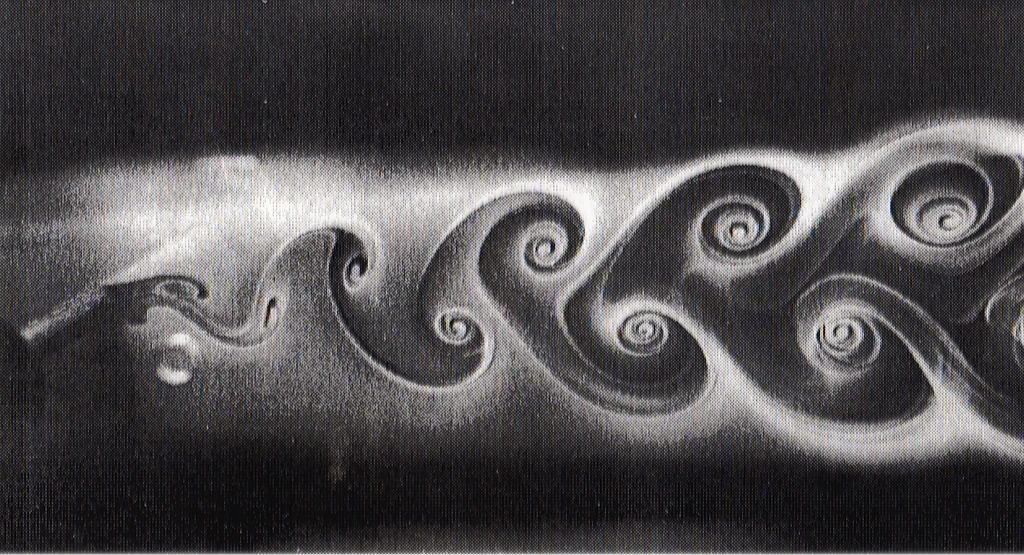

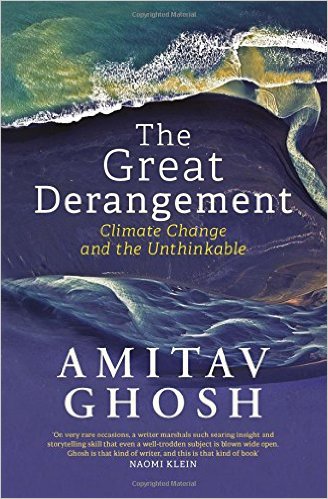


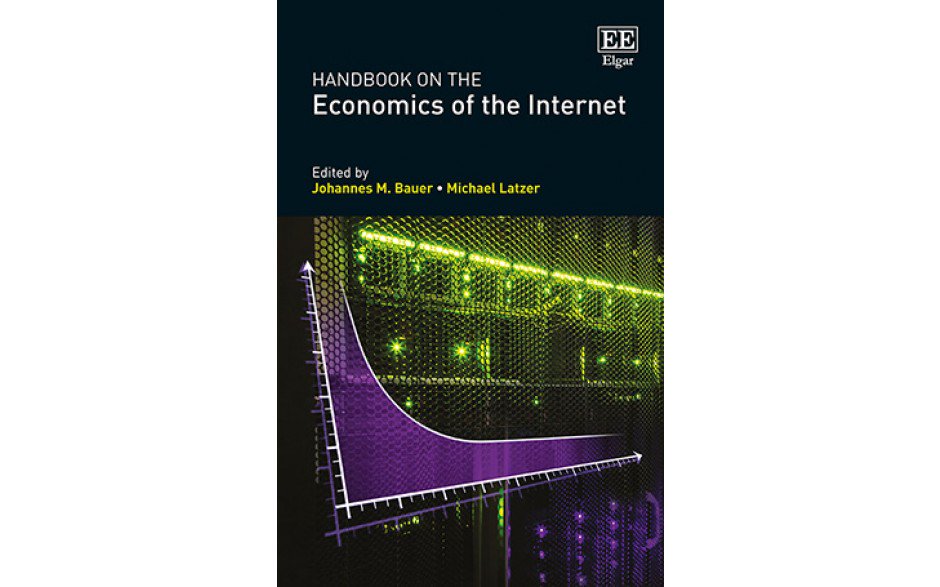

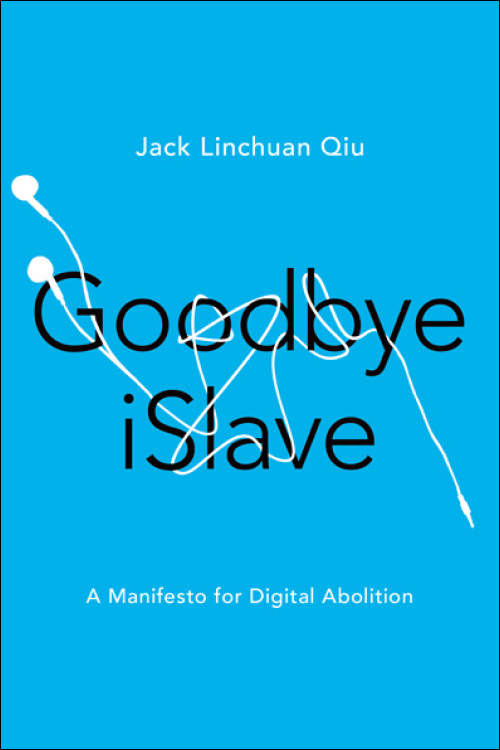



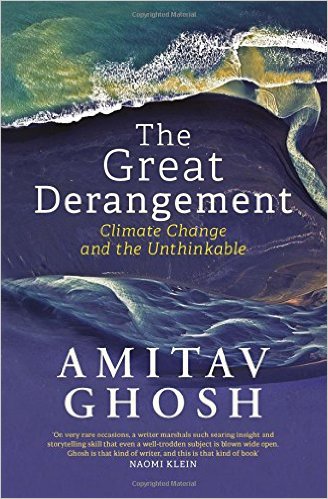
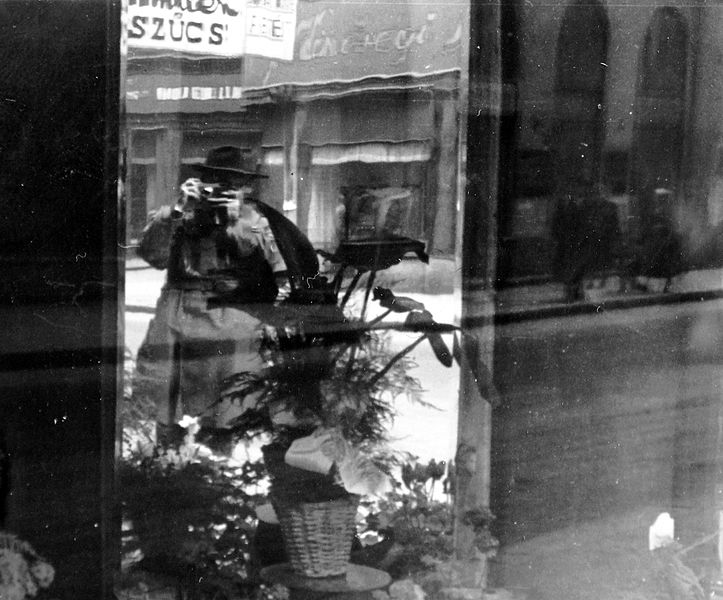
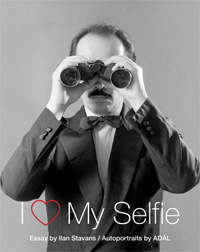 Ilan Stavans, I Love My Selfie (Durham, NC: Duke University Press, 2017)
Ilan Stavans, I Love My Selfie (Durham, NC: Duke University Press, 2017)